A shimmery mahogany substitute

Since the days of Thomas Chippen-dale, woodworkers have enjoyed a love affair with mahogany. Sadly, over the course of two centuries, genuine mahogany (Swietnia macrophylla) has been listed as an endangered species. As a result, this Cadillac of cabinet woods has become extremely difficult to find and prohibitively expensive. In response, lumber dealers have relabeled several sustainable substitute species as “mahogany.” Of the bunch, sapele—pronounced sah-PELL-ay—(Entandrophragma cylindricium) stands out from the rest.
Although a member of a different species, sapele (a.k.a. sapelli or sapeli) has a similar reddish-orange color as mahogany. When quarter sawn, sapele boards exhibit a uniform ribbon pattern that shimmers in the light. In flat sawn boards, this squirrel grain makes for wild swirls and surfaces that shift color depending on how the light strikes. This beautiful pattern occurs because sapele’s grain is “rowed” or interlocked, which can make planing and shaping tricky. Despite some challenges, sapele’s color and lively grain make this wood worth the effort it takes to tame. Read on to learn how to select the best boards and make the most of them.
Where the wood comes from
Bu hikaye Woodcraft Magazine dergisinin June-July 2017 sayısından alınmıştır.
Start your 7-day Magzter GOLD free trial to access thousands of curated premium stories, and 9,000+ magazines and newspapers.
Already a subscriber ? Giriş Yap
Bu hikaye Woodcraft Magazine dergisinin June-July 2017 sayısından alınmıştır.
Start your 7-day Magzter GOLD free trial to access thousands of curated premium stories, and 9,000+ magazines and newspapers.
Already a subscriber? Giriş Yap
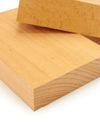
Beech
Plain looks, but a solid performer
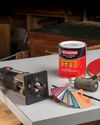
Working with PLASTIC LAMINATE
Adding a durable, smooth, and colorful surface to your work
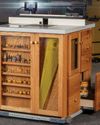
High-Tech ROUTER TABLE
A state-of-the-art shop essential

Albers-Inspired NESTING TABLES
A colorful array of Bauhaus utility

Desktop ORGANIZERS
Mini modules for your modern workspace

Joiner's MALLET
A hard-hitting shop hammer

Battery-backed biscuiting
DeWalt 20V Max XR Biscuit Joiner
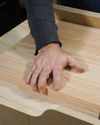
Crosscut SLED
A basic build of a crucial table saw accessory
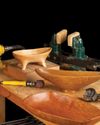
Power-carving BOWLS
Tools and techniques for sculpting

Library STEPS
Mitered box joints give rise to an updated classic